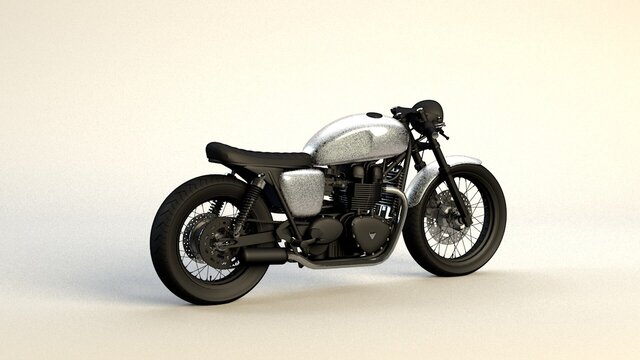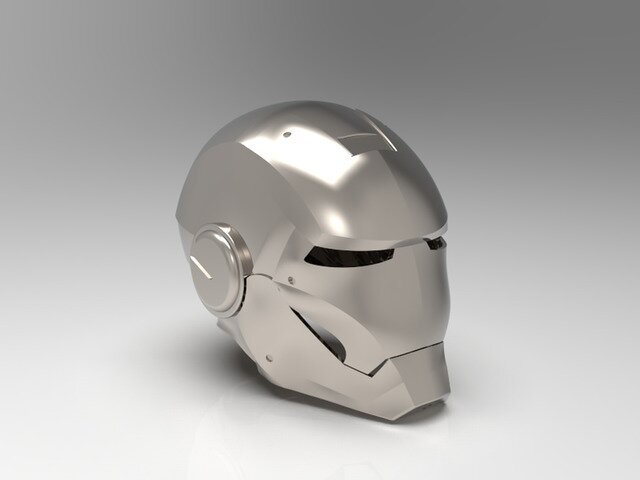Everywhere you go, CGI is prevalent, but you might not notice it. It has become a part of nearly everything, from movies and video games to less obvious examples like advertising or displays. If you’ve taken a look through a magazine recently or walked through a mall, chances are you’ve seen CGI. There are so many CGI applications, and it can blend so well with other types of art that it isn’t always easy to tell what it is or isn’t. Let’s take a look at CGI and learn more about what CGI actually is.
CGI explained
CGI is short for “Computer Generated Imagery.” It’s a form of art where the 3D rendering designer uses a computer to create the image. Sometimes, these images are hyper-realistic and virtually indistinguishable from a photo. Other times, they are cartoon-like, such as CGI for an anime. Regardless of how realistic it looks, if a computer is used in the design, it’s considered CGI. This means that CGI can be 2D, 3D, a simple object or a complex background, can be blended into live-action scenes, or be a scene all on its own. There’s a vast number of different applications for CGI, which makes it difficult to determine what people are talking about when they discuss it.

Although there’s a relatively broad spectrum of meaning, CGI commonly refers to 3D computer graphics. These can be 3D models, renders of those models, and even animation sequences. CGI can be mixed with photography so that an actor appears to interact with a character during a film.
Why CGI is used
CGI is used extensively in movies and advertising, and not always for fantasy characters. If traditional photography can be used to create the finished product, why use CGI at all? This is a great question, and there are quite a few reasons for this.
CGI is used when it is safer
Did you witness a dog rescue someone from a burning building or a barbarian fighting a lion? These things can be dangerous, and while it’s certainly possible to orchestrate with animal actors, it’s not always the safest thing to do.
RELATED: Why Product Design Services Use Photorealistic Rendering for Marketing New Products
In these cases, CGI may be used for the parts that aren’t safe or may be stressful for animal actors.
CGI is used to save time
To get a jump on advertising, CGI renderings of a future product are often made before the product is created. When the renderings are made first, an advertising agency can start adverting potential apartments while still under construction or introducing a product before it hits store shelves.
CGI is used to gain backers
Before products are ever made or buildings are built, a significant amount of money goes into their creation. However, not all businesses have the funds for this, which means finding backers who are interested in investing. That’s where architectural 3D modeling services come in. Even the most well-written plan isn’t as good as a high-quality picture of what is going to be created, and that’s a tricky thing to do if the product hasn’t been made yet. CGI can bring a product into reality and show backers what their money will be going into.

This is especially important when traditional investing falls through, and the creators of a new product are depending on crowdfunding to create the product anyway. CGI can be very useful to show people what a product could potentially do or what it might look like.
CGI is used to save money
Sometimes, CGI is simply cheaper than standard photography. It costs a lot more to have a prototype of a product made by a rapid prototyping service and shipped just to take a few photos in advance. Photography itself can be very expensive and be more costly than the product itself as well. In the acting world, a CGI of a crowd can save money by generating crowds, whereas actors would need to be hired in the past.
Common applications
CGI is used in virtually every industry. Although there’s no shortage of ways it can be used, it’s helpful to see how CGI can be applied in all of its most common forms. Here are just a few of the most common applications CGI is used in every day.
Real estate
CGI is very popular in real estate and is used for several functions by 3D real estate rendering services. CGI can be used to show backers, potential renters, and construction crew a detailed look at what the building will look like when it’s completed. CGI can be used in various ways, from the stills of buildings to a fully immersive virtual reality scene that lets them walk around inside and out.
Movies
We’ve all seen CGI in movies, even if we were unaware of it. CGI is often used in historical movies to keep backgrounds consistent and add details appropriate to the era, in sci-fi to create futuristic spaceships that don’t exist yet, and to cover anything that may be impractical, unsafe, or unrealistic to do in the real world.
Advertising
Advertising is another popular field for CGI. CGI can help give companies the jump on advertising if the product isn’t created yet, but it’s also frequently used for a variety of other reasons. In advertising, it’s important to show the product to its best advantage, and that can be difficult to control even in a professional photography studio. That’s why we recommend you work with a freelance product design service.
CGI is often used because angle, lighting, backgrounds, and the product itself can all be perfectly controlled, making every render the ideal shot every time.
Crowdfunding
A common way for inventors to gather enough money to create their product is through crowdfunding. This is also a viable avenue if traditional investors aren’t interested in the product. In this case, a CGI representation of the product can be essential to show potential crowdfunders how it works.
RELATED: How to Build a Successful Crowdfunding Campaign
This is especially important if the product involves technology that needs to be developed, such as an invention to clean the oceans, where the need is recognized but no technology is currently available to pull it off. Showing crowdfunders how a product might work can be the difference between a successful campaign and one that doesn’t meet its targets.
History of CGI
We think of CGI as new technology, but the first elements of it began all the way back in the 1950s. In 1958, the first film to use a CGI animation was created, a film called Vertigo. However, these were simple 2D animations, and it wasn’t until 1972 that the first elements of CGI as we’re now familiar with came into use. In the film Gunslinger, 3D visualization services created a 2D display of what they thought robots might see if they had vision. Their efforts were a hit and even led to a sequel.

From there, CGI has grown and developed over time to become what it is today. Films went from 2D to 3D, as other famous films came forward such as Tron, and in the 90s, the iconic Jurassic Park. Jurassic Park was largely considered one of the best animations of the time. The reason for its success is that it didn’t rely on any one trick. Jurassic Park was made using a mixture of real-life acting and props, animatronics, and CGI.
The result was a realistic movie that made one genuinely believe that dinosaurs had come to life.Today, CGI is still growing and developing, with new technologies leading to even better results and new applications.
Cad Crowd’s 3D rendering services can create some killer CGI
At Cad Crowd, we work with hundreds of pre-vetted, highly qualified freelancers in the CAD and 3D design space. Regardless of the type of project you have, we can help. Find out how it works.
